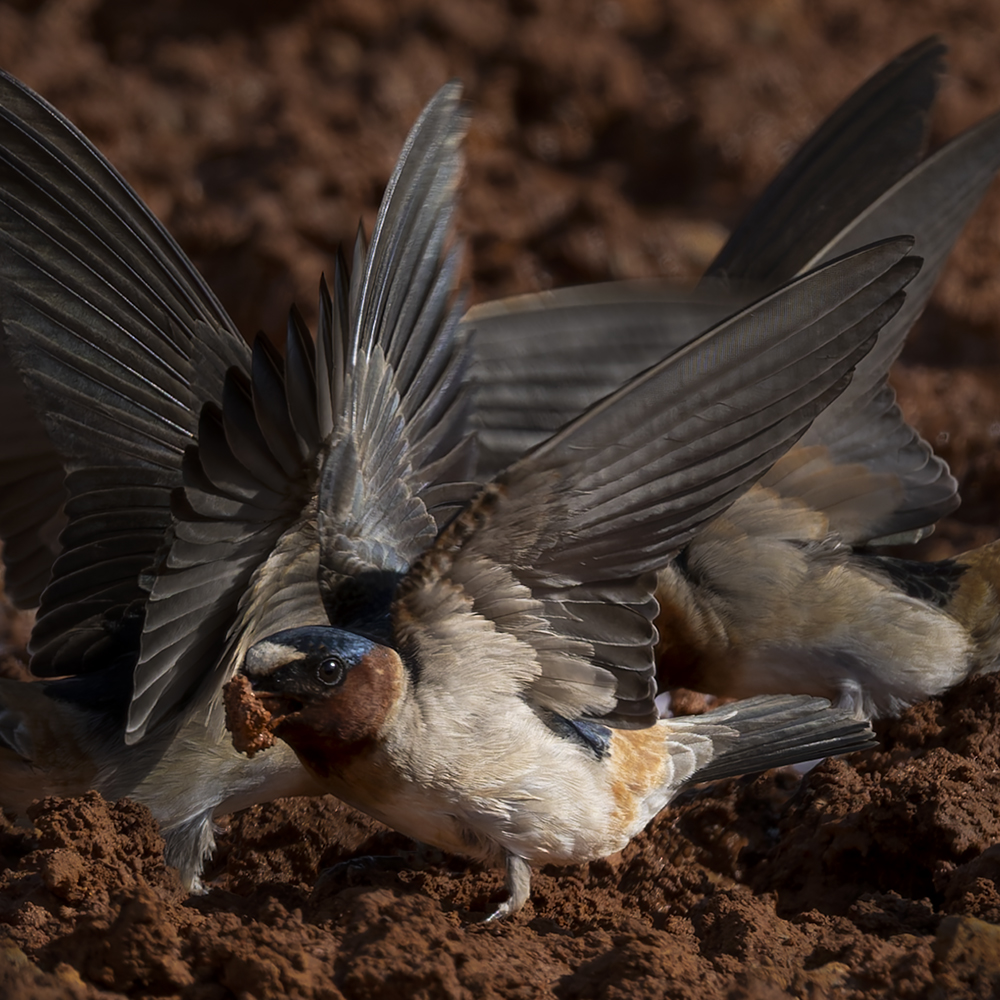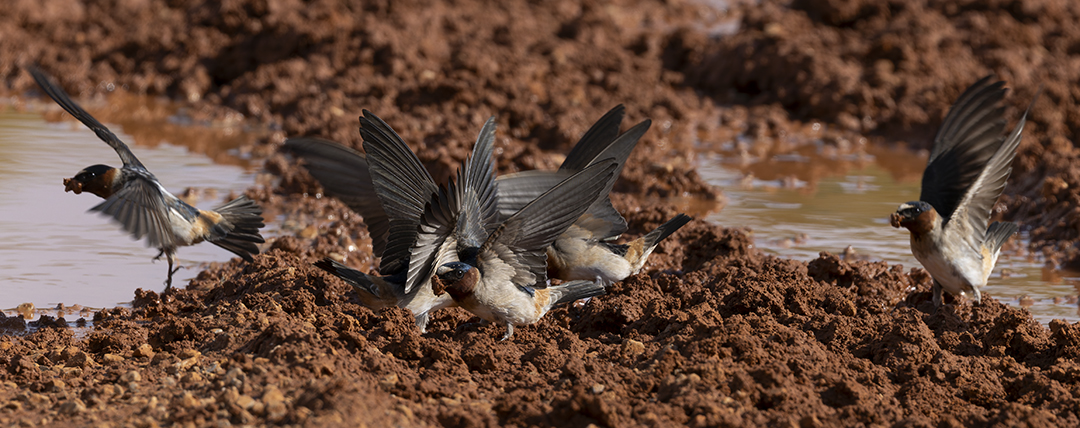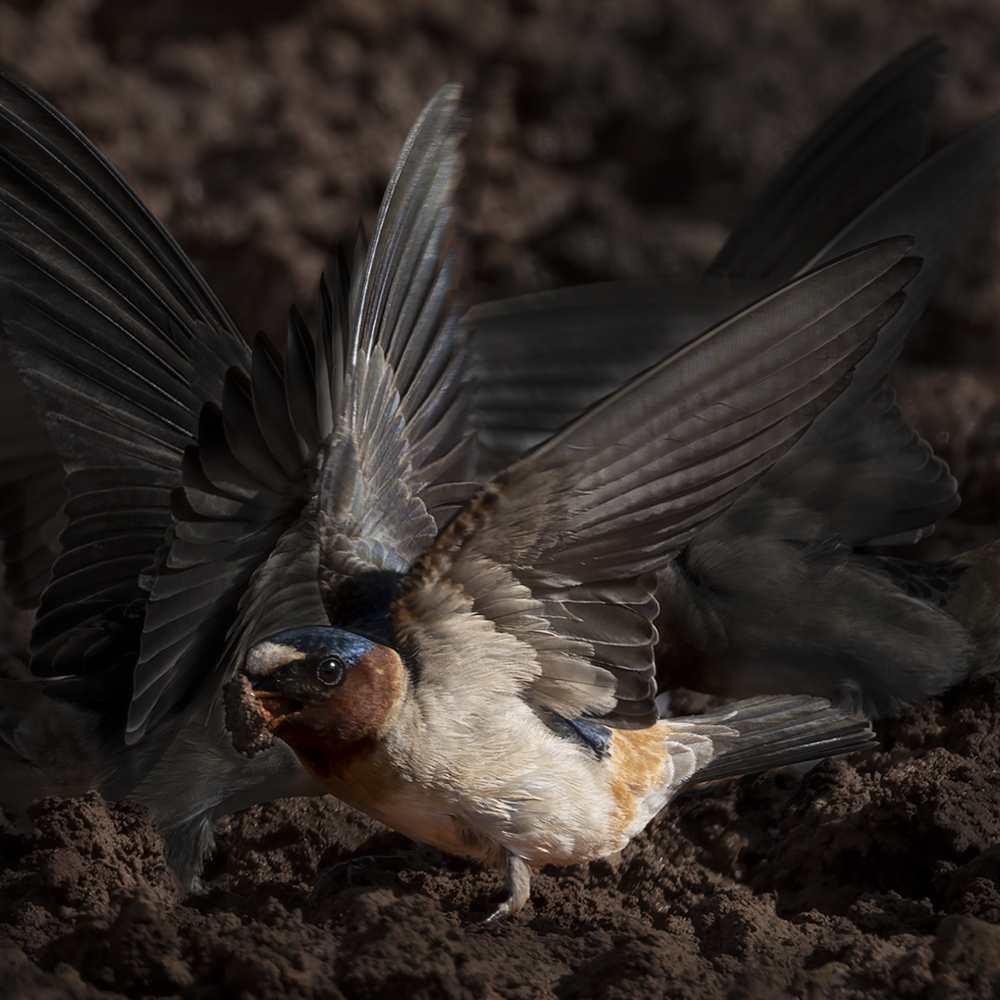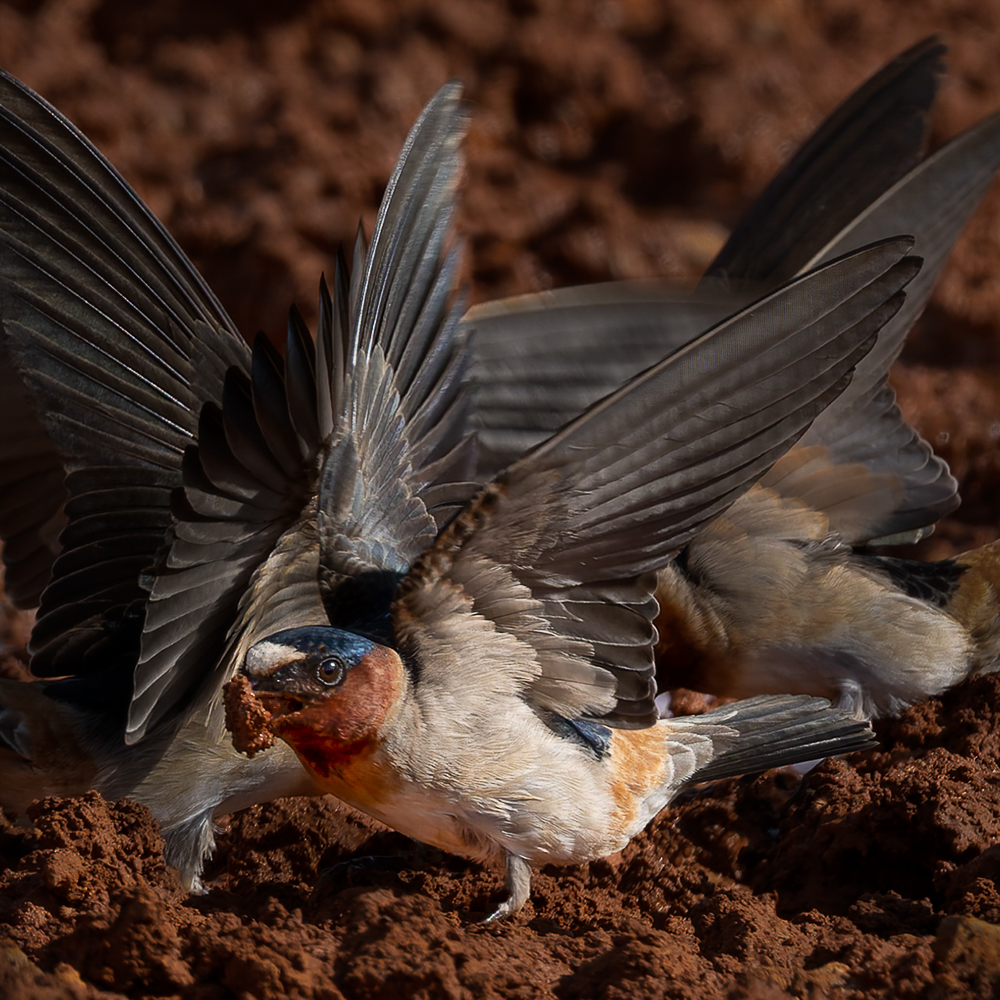Piers Blackett
About the Image(s)
In April the excessive rainfall caused muddy conditions. I was negotiating a muddy road when I came across a flock of Cliff Swallows collecting mud for nest building under the bridges and was impressed by their intensity. My camera was set at f/10, 1/640th sec, ISO 320 using an RF100-500 at 500 mm. I stayed in the car and had faith that my Subaru would not get stuck, but I did consider trying to get at a lower angle. I spent more than 30 minutes shooting until another car came the other way, so this one was selected from the collection. As you can see from the wider view there was excessive activity, so the challenge was to find catchlight in at least one bird. Going monochrome possibly focuses down on the bird's activity.
9 comments posted
You did your best in a very busy, clustered situation.
Regarding the PSA Nature definition (which is probably the same or very nearly the same as the FIAP definition). I wonder how a judge might interpret the allowable adjustments on your image where it states "Global and selective adjustments such as brightness, hue, saturation and contrast to restore the appearance of the original scene."
My interpretation of this statement is that you might be allowed to change the "brightness" of the birds behind the front bird to create some separation. Maybe, maybe not!
Posted: 07/06/2025 03:34:02
Especially since I'm seasonal resident of SW Florida, I have really enjoyed exploring and learning bird photography. Florida is a Mecca for Birders. It is (excuse the pun) a whole different (photographic) animal.
I love the catchlight that you captured in the birds eye in your presented image, but my first impression of the image, overall, is that I wasn't sure what I was looking at. The background wings without heads forced me to look for the shooting information - perhaps I was seeing a double/multiple exposure or a long exposure from the single bird. Your shutter speed told me otherwise. It wasn't until I saw your "Original 2" image that I saw the bigger picture and I feel it told the better story behind the cacophany of fluttering wings and the gathering of mud. I love the colors on the primary bird.
In the BW version, I feel that the background wings get lost in the darker shades.
In looking at your submitted image again, I felt that the head and breast of the featured Cliff Swallow were a bit too dark, not giving enough visual separation betweem it and the headless birds behind it. I took the liberty of lightening up those portions of the featured bird to provide better separation. I used a simple brush to mask it then raised the shadows and exposure slightly. Posted: 07/11/2025 18:54:04




